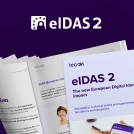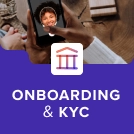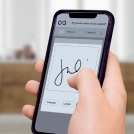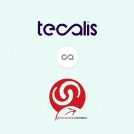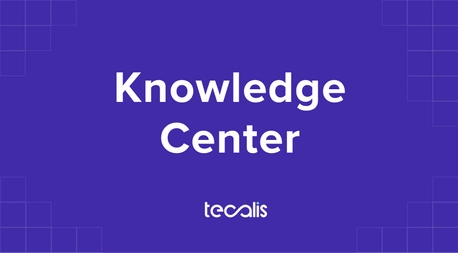Index
Get the latest news right in your inbox
Customer portals were one of the great revolutions in customer-business relations. Doubts, queries, formalities, incidents, changes... These virtual spaces allow users to carry out all kinds of operations without having to physically go to a point of sale in person or make a phone call.
Both to provide the customer with greater autonomy and to reduce costs and streamline after-sales processes, a well-built customer portal will bring great benefits to both parties. As we have been saying, this is nothing new. However, many of these systems need updating and we have seen little innovation in this area for almost a decade.
In this article we will take a look at customer portals and self-service portals, try to understand their current status, but especially address the developments that have occurred and how they have impacted certain industries, enabling new use cases and boosting cross-selling or giving a twist to customer-business relationships.
What is a customer portal?
A customer portal is a digital space accessed by users where they can consult all kinds of information about your products, services or account. In addition to information, in some cases different types of management can be carried out depending on the level of self-service achieved by the customer portal. This last aspect will be discussed in the next section.
Through an access point (login portal), and with secure credentials provided after a customer onboarding process, the platform is accessed. This space can be available in different digital media (web or app) that are accessible through different electronic devices with internet access (computer, mobile or tablet).
Today, the customer is proactive, establishing an on-demand model where an empowered and informed user wants answers to their issues. Most commonly, they first try to resolve an issue through the customer portal and then end up contacting support agents only as a last resort when this portal has proven to be incomplete.

The demand for immediacy clashes with options such as waiting to be attended by an operator on the phone or getting the answer to a support ticket via e-mail. Moreover, recent studies have shown that many users prefer to do these tasks or queries autonomously, so that they can check the results for themselves and invest as much time as they wish in the task.
What is a customer self-service portal?
A self-service portal is a customer portal that offers options where the user can autonomously perform key operations and transactions on the relationship they have with the company they are a customer of. Unlike basic customer portals, self-service portals offer a variety of functions far beyond queries, status tracking, changing address information or opening a support ticket.
In this way, self-service portals are emerging as an organized and comprehensive environment in which to perform complex or higher-risk operations. In this sense, security is a crucial element in creating these highly functional customer portals.
As we have seen, the self-service portal is not just a communication channel, but an application in which to implement effective changes in the customer-business relationship in real time. This offers users mechanisms to solve common problems or perform commercial actions on their own without the need to contact support or sales, in line with the new expectations and dynamics of today's consumer.
Basic elements of a functional customer portal
The first basic element for a customer portal is a secure authentication system. User access must be performed under tested standards that comply with the regulations of the region and market in which you are operating.
SCA (Strong Customer Authentication) models are specified by standards such as PSD2/3 and stand out for their good use of MFA (multi-factor authentication) dynamics. Providing users with credentials based on KYC identity verification makes it possible to comply with regulatory standards while enabling high-risk operations.
What does this mean? That users will not have to do complex identity checks just before the key transaction. This is a major driver for reducing friction that often leads to crashes just before a cross-sale.
The digital signature is one of the most relevant tools that must be present in any customer portal. This technology supports both the identification tasks and the contracting of new products within the self-service portals. Linked to PSD2 authentication, the digital signature is used as an element to provide full E2E traceability to the operations performed within the customer portal.

As we have already mentioned, another new feature of the customer portals is the inclusion of major cross-sale options. Thanks to electronic signatures and authentication based on biometric features, users only need a couple of clicks to contract complementary products after the onboarding process, account registration and contracting of the main product.
Similarly, long after that first sign-up and contracting, there are many options to motivate users to make new transactions, contract new services or discover new products within self-service portals. Well-designed product configurators are a clear attraction to boost this type of sales, beyond banners, pop-ups and other advertising elements within your customer area.
Another important element of customer portals is the omnichannel support of this digital tool. Access to the platform through any device and channel is essential to prevent users from giving up if they access a website and are redirected to an app. A cross-device experience is essential so that they can decide to use one or both channels depending on their needs or environment.
Self-activation systems
Self-activation is one of the most important elements of a functional customer portal. And also in general of any business strategy, especially those that work with services. In line with the demands of immediacy, users are not willing to wait days or weeks until a product or service is activated from its contracting.
This use case is possible thanks to the RegTech technologies of QTSPs (Trusted Service Providers) and automated customer scores with anti-fraud controls. Being able to register service or product instantly right after a digital onboarding and onboarding requires:
- KYC identity verification.
- AML checks in case of BFSI products.
- Electronic contracting with eIDAS digital signature.
- Connection of these processes with the business operations systems.
Compliance is fundamental in this sense, since the sectoral and regional regulations of the region where the operation is taking place usually set the standards that must be met in terms of security and anti-fraud controls in order to legally authorize these customer registrations (especially in industries such as banking, insurance, telecommunications or utilities).
This auto-activation process may or may not be included within the customer portal. That is to say, depending on the type of product, the auto-activation will be done automatically right after signing the contract and validating the KYC/AML controls or it will be done through a separate link or auto-activation portal (for example from the link in an email when the user receives a SIM card or a wallet card at home). Also in both cases the user can be told to access this system from within their customer portal.

Finally, in the best customer portals we can find self-completed forms by doing advanced recognition of documentation of all kinds beyond identity. For example, for a customer who has a simple account in a bank and wants to bring his payroll or apply for a mortgage from your self-service portal. From there, they can upload their paycheck (and all types of documentation required to make the operation viable) and pre-approve their mortgage in a matter of minutes.
Industry-focused customer areas
Tailoring customer and self-service portals by industry is essential to meet the specific needs of each sector. Each industry faces unique challenges, from specific regulations to unique operational processes. An effective customer portal must not only offer standard functionality.
Like the most functional agent portals, which allow for the creation of a broad sales network capable of offering tailored solutions, self-service portals must be customized to address the particular demands of each industry. Agent portals, however, include functionalities to enable sales reps to generate more business and resolve customer queries both face-to-face and remotely.
Banking, Insurance and Financial Services
BFSI areas are among the most regulated and complex. Efficient management of security, privacy and financial transactions is essential. In this context, customer and self-service portals, framed within what we know as digital banking, become strategic tools to improve the user experience and comply with regulations.
In the financial arena, customizing a customer portal involves not only customizing the interface for intuitive navigation, but also incorporating advanced security protocols. Users must feel secure when making transactions and accessing sensitive information. In addition, customization extends to offering specific financial services, such as investment management, loan applications and balance inquiries.
In the insurance sector, there are many operations in which the user must upload images, for example. The best second-generation OCR technologies allow the requested image documents to be uploaded through self-service portals, with AI validation. Electronic notifications are another key case in the insurance industry, where users can view policy expirations, cancellation notifications or changes in conditions on their customer portals.
Telecommunications
Telecommunications is a dynamic industry that requires agile and accessible solutions for managing services and customer queries. Adapting customer and self-service portals in this sector involves addressing challenges such as activating services, managing contracts and resolving technical issues efficiently.
Users in the telecommunications sector are looking for a seamless experience. Self-activation of services, such as setting up plans and activating new lines, must be intuitive and fast. In addition, the ability to check the status of existing services and receive technical support directly through the portal contributes significantly to customer satisfaction.
BSS/OSS systems such as Customer Hub allow the design of customer portals where to cross-sell and explore synergies with new verticals for telcos such as device leasing or sale, subscriptions to streaming services or even services such as electricity and gas, which can be contracted directly thanks to their RegTech technologies.

Utilities and others
Utilities, such as water, electricity and gas, have particular requirements in terms of account management and customer service. Adapting customer and self-service portals in this context involves addressing billing, service management and efficient resolution of utility-related issues.
Adaptation in the utility sector focuses on providing users with the ability to manage their services effectively. This can include features such as online meter reading, bill payment, scheduling maintenance services and obtaining detailed consumption information.
How to create a self-service portal with Customer Hub
For the creation of a customer portal, it is necessary to combine the aspects we have seen previously: technological capacity for the development of web systems, knowledge of the rules and regulations of the industry and expertise in customer experience and sales.
Tecalis Customer Hub emerges as a comprehensive solution for the creation of customer and self-service portals. With a focus on personalization, security and user experience, Customer Hub offers a wide range of features and functional capabilities that make it possible to build an efficient and adaptable self-service portal for various business needs.
Highlights include advanced authentication systems, compatibility with industry-specific regulations, and an intuitive interface that facilitates user navigation. In addition, the platform integrates seamlessly with the enterprise operating systems of both the brand and the distributors and business partners (indirect/alternative channel), ensuring efficient operations management and seamless communication between the company and the customer.
Tecalis, through its customer experience experts, collects the key use cases to be carried out by business customers and proposes a complete and functional customer portal, integrating all the necessary technologies to enable new use cases according to the most demanding industry standards.
Furthermore, unlike other similar systems, Tecalis Customer Hub integrates agent portals, brand management centers and customer portals under one umbrella.

Key benefits of the best customer portals
These portals not only act as virtual access points, but also offer a diverse range of benefits that significantly transform the user experience and improve the operational efficiency of organizations.
Below, we highlight the key benefits that distinguish the best customer portals, from improved user experience to operational management efficiencies. These benefits not only meet the expectations of the modern consumer, but also position companies at the forefront of innovation, enabling them to adapt and thrive in an increasingly dynamic and competitive business environment.
1. User Experience (UX) improvement:
- Intuitive and easy to navigate interface.
- Quick access to relevant information.
- Customization of preferences and settings.
2. Operational Efficiency:
- Reduced workload for customer service personnel.
- Automation of routine processes and frequent queries.
3. 24/7 availability:
- Access to services and consultations at any time, regardless of geographic location.
- Flexibility to carry out transactions outside business hours.
4. Self-service and Customer Autonomy:
- Ability to solve problems and perform operations independently.
- Reduced dependence on telephone or face-to-face assistance.
5. Security and Regulatory Compliance:
- Implementation of secure authentication systems.
- Adherence to industry-specific regulations.
6. Efficient Transaction Management:
- Agile service and product activation process.
- Facilitation of key operations such as information changes or hiring.
7. Integration with Enterprise Systems:
- Seamless connection with internal operating systems.
- Consistency in data management and business processes.
8. Promotion of Cross-Selling and Upselling:
- Use of tools such as electronic signatures to promote complementary products.
- Personalized offers based on customer transaction history and preferences.
9. Omnichannel support:
- Access to the platform through various devices and channels.
- Consistent experience in web, mobile applications and other digital channels.
10. Feedback and Continuous Improvement:
- Collection of data on customer interactions.
- Analysis of comments and behaviors to improve service offerings.
11. Cost Savings:
- Reduction of costs associated with manual operations and traditional customer service.
- Increased efficiency in problem solving without the need for human intervention.
12. Complete Traceability of Operations:
- Use of tools such as digital signatures to guarantee the integrity and authenticity of transactions.
- Detailed record of all interactions within the portal.
These advantages underscore the strategic importance of having a well-designed customer and self-service portal and RegTech technologies, which not only improve the company's operational efficiency, but also provide a positive and autonomous experience for the end user.




